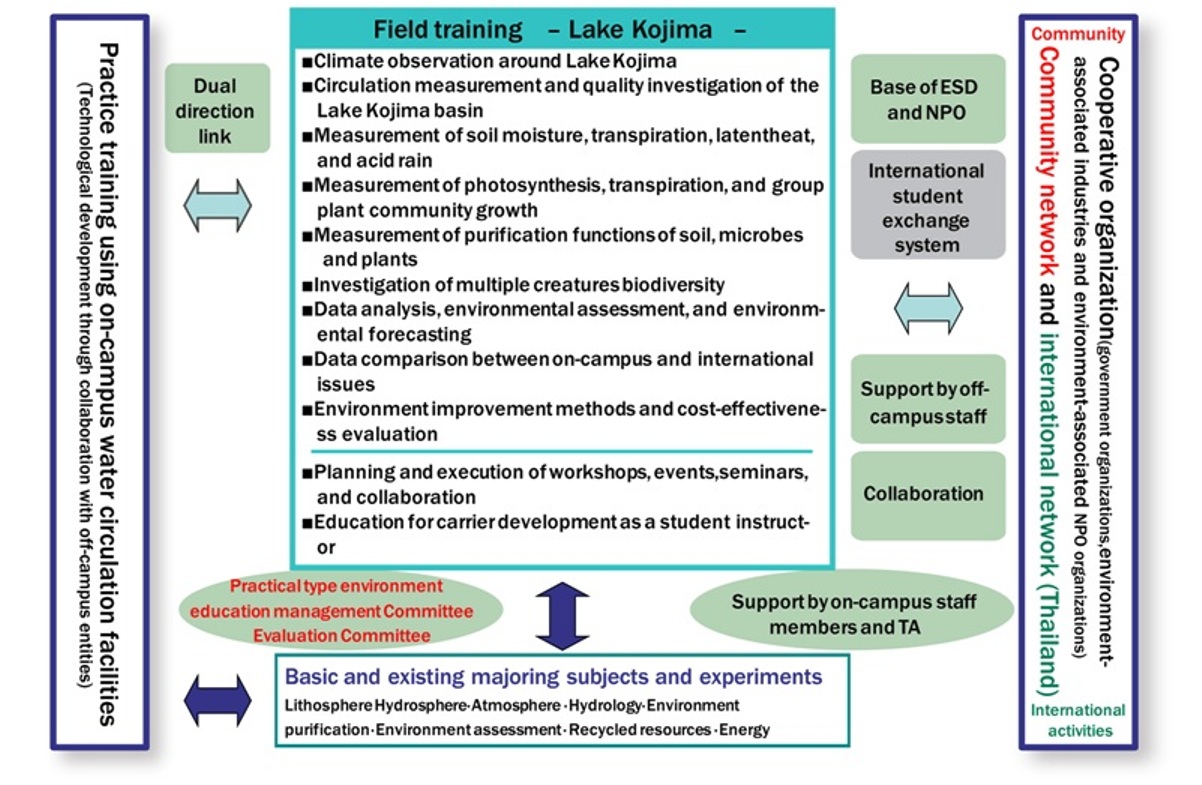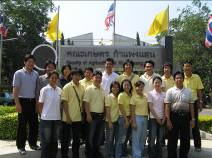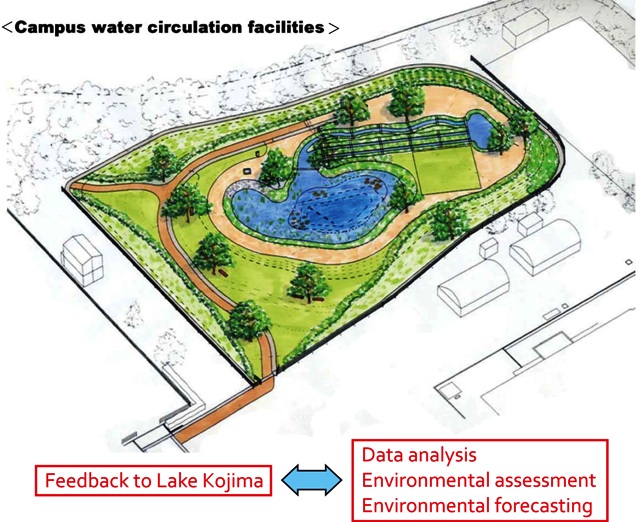(1) Field study at Lake Kojima, and collaboration with outside campus organizations

Figure 1 shows what the students can learn at the Lake Kojima site. The
outcome from that field study would be compared with what is learnt on
campus and in Thailandfor analysis. Then such data would be put in a database
to help build a new system to use for environment improvement activities
of the future, and analyze the cost and effect of the program as well as
how the environment would be able to be improved. The students would participate
in some events planned by government organizations and in the activity
created by the Kojima Lake Eco-Web, which is an environmental protection
organization that is jointly managed by industries, universities, and the
government. Furthermore, outside instructors would be invited, and the
students would be educated as instructors for biotopes to be placed at
every school. Thereby, students would be able to have experience through
this curriculum to work with local people and organizations. Through such
field study, the students would be able to understand the various functions
associated with Lake Kojima, and know of the importance of collaboration
to be done with the local people there.
<Fig.1:Program Outline>
 ←Please click here. (an enlargement) ←Please click here. (an enlargement)
|
(2) Curriculum position

The program is designed to proceed as positioned to include the basic
subjects for specialized fields for sophomore students, and to grant a
unit by 60 classes throughout the year starting in academic year 2008.
 ←Please click here. (an enlargement) ←Please click here. (an enlargement)
It is not the same education method as it used to be, which was to proceed
for subject by subject; the new mode used for this program is to give a
total level of basic education related to the water environment using field
of “waterside space”. It is to improve the way of education to change from
a usual one given in a small scope in which the students merely sit in
a class or learn in the experiment room to a more practical one to get
involved in searching for the basic mechanism of the subject. Furthermore,
in addition to the program for students to learn at the site of Lake Kojima,
using the facilities available on campus, they would be provided with the
underground water, the soil, the microbe, and the creatures. With those
materials provided, they would be able to study the purification of the
natural environment and to observe the associated climate conditions. It would help students to understand the water circulation system utilizing the natural environment functions and to conceive of water much more intimately than before while creating a biotope, for example. Consequently, such a unique education system would be established.
During the summer vacation of the second year, the students are requested
to attend a special course set at the Kasetsart University, Thailand, for
2 weeks, thereby receiving the course unit. Through attending and being
attentive in the course, the students can receive practical education such
as that of natural environment functions, water environment issues, and
environmental protection activities that are being undertaken in Thailand.
|
(3) Water circulation
facilities on campus

The water circulation facilities used for the program would also be used
for collaboration with industry, research institutes, and organizations
outside the campus to do research related to real-world issues. Expansion
of the facilities would be made only for the hardest of them, so that there
would be no difficulty in learning the two stages of education: the first
stage in which the natural environment is restored and the second stage
in which the restored environment is maintained. Such education is different
from the usual method of learning using existing facilities or biotopes,
where the natural environment is nicely preset. It rather means that the
students would be able to acquire the ability not only derived of basic
knowledge but also the power of applying what they learn immediately for
use in the real world. Therefore, the feedback to Lake Kojima or any other
place would be much easier and immediate. Furthermore, it is an education system in which the students can observe for themselves
to understand the mechanisms of living creature systems such as the balances
of CO2, nitrogen, and phosphorous, tree-planting to reduce the impact by acid
rain, and the effect of reducing temperature using transpiration from planted
trees. This way, while learning and experiencing the world of science around
us, the students would be trained to be able to gain the knowledge and
power of producing a new technology for “water resource capture”, “co-existence
with the nature”, or “natural environment restoration”. In addition to
the points described above, all activities performed as part of the program
would be used for collaboration between universities and high schools to
teach the program contents to the high school students as well.

|
|
| Copyright © 2007 Faculty of Environmental Science and Technology, Okayama University All Rights Reserved. |